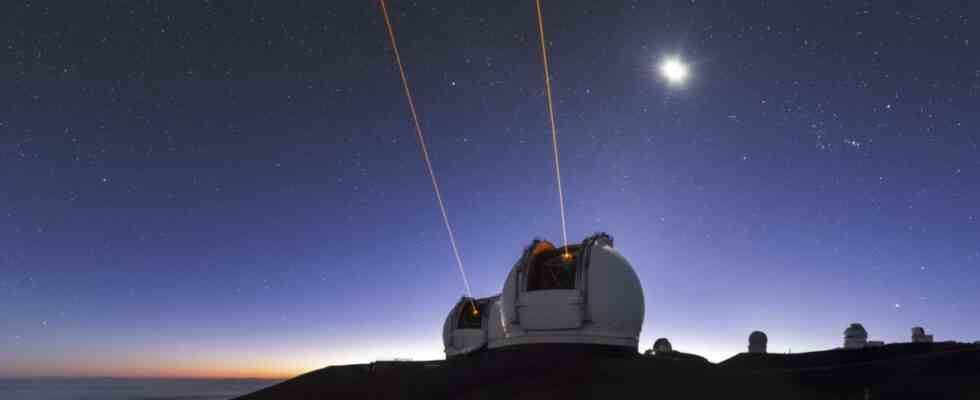In the past, the Mauna Kea mountain in Hawaii has repeatedly caused conflicts between the interests of science and the indigenous people of Hawaii. Because the 4200 meter high Mauna Kea is the ideal location for astronomical observatories. At the same time, its summit region is considered the place of the gods by the indigenous people. A new law should now settle the deadlocked conflict, reports the journal Nature.
The law, signed by Hawaii’s governor last week, stipulates that the disputed area on Mauna Kea will be managed by an 11-member board made up of various interest groups, including representatives from astronomy, education, land management politics and indigenous groups on Hawaii. This relieves the University of Hawaii of its role as supervisor of the area. In 1968, the university had entered into a 65-year lease with the state that permitted the operation of a scientific reserve with a focus on astronomy. The new law means that the university has to be noisy Nature fully hand over management of the area to the new body by 2028.
Protests prevented the construction of the telescope
The reason for the change in law is a conflict over Mauna Kea that has flared up again and again since 2015. Mauna Kea is an important location for astronomy: There are already 13 observatories on the summit of the mountain, two of which are currently being shut down. With the construction of another telescope, the so-called Thirty Meter Telescope (TMT), with a mirror 30 meters in diameter, was started in 2014. It should become one of the most powerful telescopes in the world. Violent protests and complaints from the indigenous population out of concern for the sacred mountain interrupted construction. Even after a court order in 2018 that declared the building permit lawful, road blockades prevented the start of construction again. Since then there has been a standstill.
For the astronomers, the top of Mauna Kea is the ideal spot. “Areas with little light pollution and stable, dry weather conditions are very suitable as locations for telescopes,” explains Markus Nielbock from the Max Planck Institute for Astronomy. According to the expert, the Mauna Kea location has proven itself in the past because the summit is above the cloud line. This is ideal, especially with infrared light, which is more strongly absorbed in humid air. With telescopes of the size of the TMT, one can observe faint and distant objects particularly well.
The future of the TMT remains unclear
After years of deadlock on the question of the future of astronomy and the TMT on Mauna Kea, solutions are now to be found. The proposal for the new law made loud Nature a speaker of the House of Representatives. Rich Matsuda, deputy director of external relations at the WM Keck Observatory in Waimea, Hawaii, says the new push has been successful in creating a framework of mutual respect. “Things were often portrayed as culture versus science,” he tells the magazine Nature. Indigenous people like Noe Noe Wong-Wilson, who took part in the road blockades, are also hoping for the new body. “We’ve been fighting to be heard for so long,” she told Opposite Nature.
It is still unclear how the observatories and especially the planned TMT will continue. First, the members of the committee must be determined. In addition, it must be reassessed how the construction of the telescope would affect Mauna Kea. The financing of the TMT is also still unclear. It remains to be seen whether the planned giant telescope can still be built on Mauna Kea several years after its planning.

